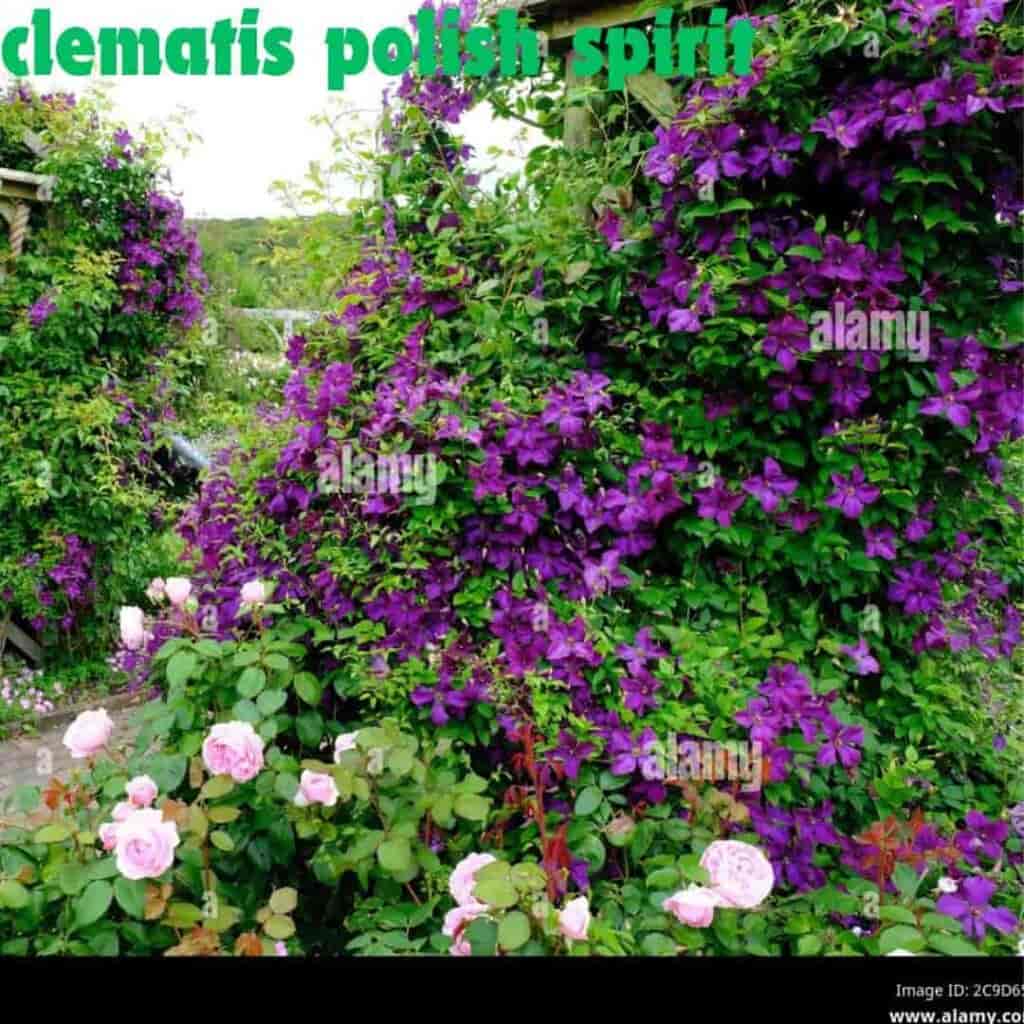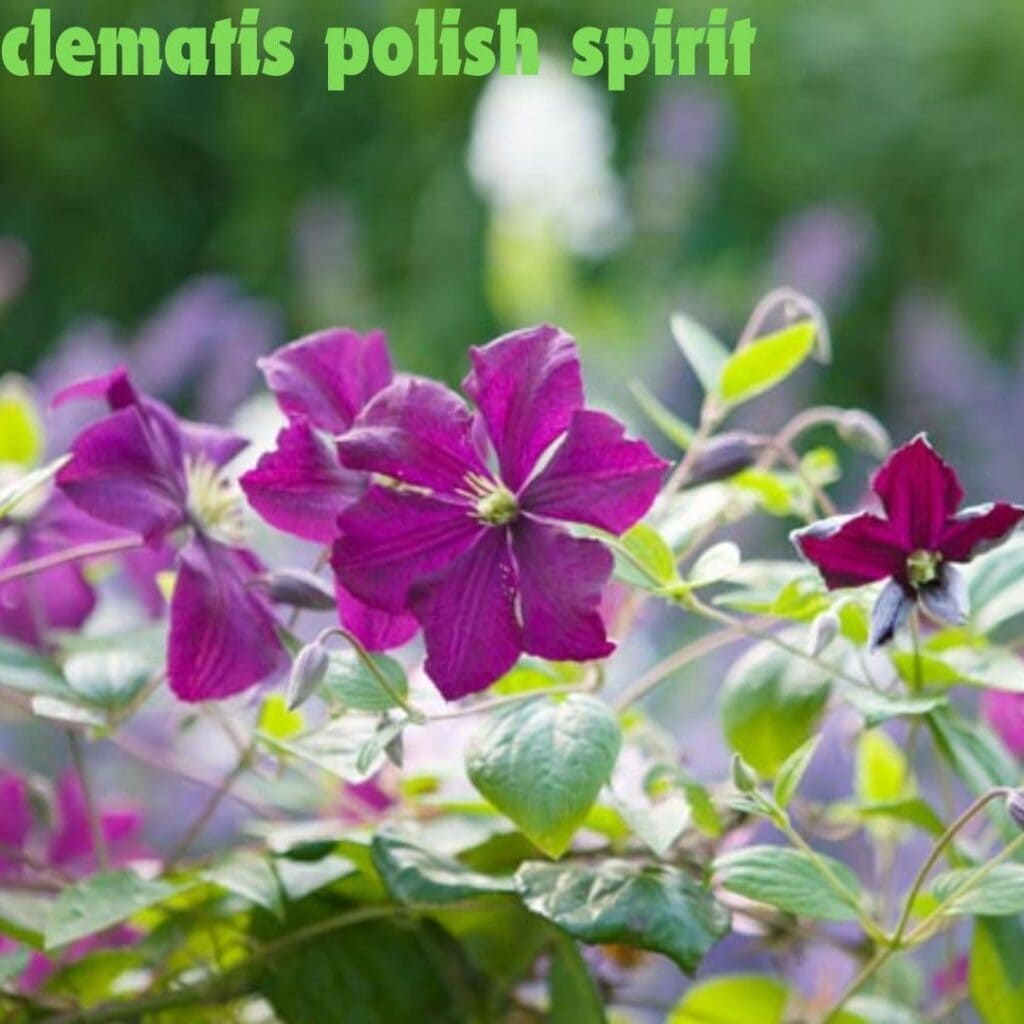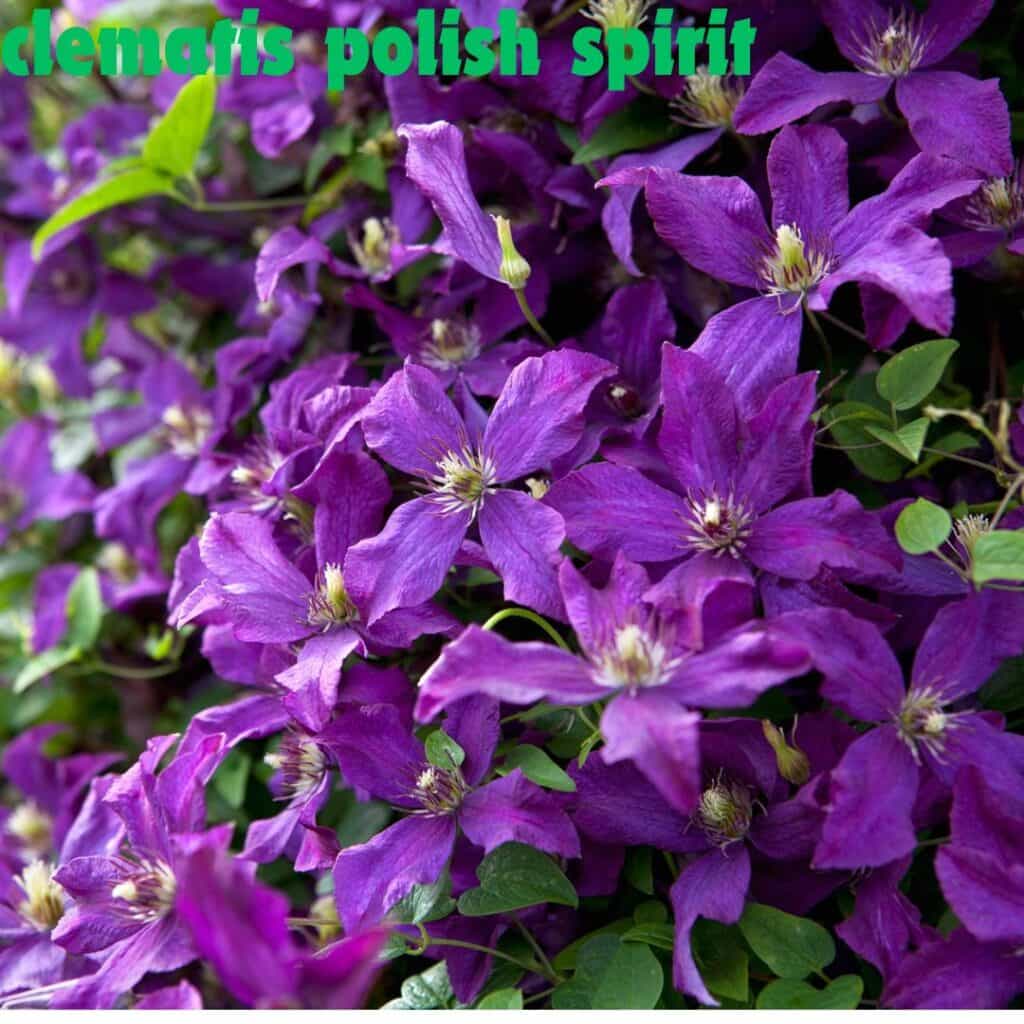How to Grow Best Clematis Polish Spirit – Origin & Guide
Clematis Polish Spirit Clean Soul is a stunning and great blossoming plant that brings variety to any garden. Known for its rich, purple-blue flowers, this mixture of clematis is number one among greenhouse workers for its productive blooming and simple maintenance.
In this expansive aid, we’ll explore everything you want to learn about Clematis Clean Soul, from its occasions to possible respect tips.
History and Origin
Clematis Polish Spirit Clean Soul has a charming history that traces back to the late twentieth hundred years. This mixture was made in Poland by Sibling Stefan Franczak, a prestigious reproducer of clematis Polish Spirit.

Oriented with the planting scene during the 1980s, Clematis Polish Spirit Clean Soul directly acquired bulk because of its lively variety and difficult nature. The name “Clean Soul” mirrors its starting point and the wild soul of Clean farming.
Unique Features of Clematis Polish Spirit
Its fantastic mix of magnificence and strength divides Clematis Polish Spirit Clean Soul from other clematis mixtures. The plant produces a bounty of profound purple-blue flowers counting 3-4 inches. These projections show up from mid-summer to early pre-winter, giving a long time of variety.
Another promoter element is its lively action tendency, which can easily cover walls, lattices, and bowers. It’s likewise known for its infection block and low support requirements.
Ideal Growing Conditions
Clematis Polish Spirit Clean Soul succeeds when inducted in the right cases. Ensuring these cases will advance solid product and great growth.
Soil Conditions: Clematis Polish Spirit Clean Soul leans toward very much depleted, prolific soil. A marginally acidic to neutral pH (6.0-7.0) is excellent. Before planting, advance the dirt with natural matter like fertilizer to further develop fruitfulness and waste.
Light and Water Conditions
For ideal growth, plant Clematis Polish Spirit Clean Soul, where it can get six hours of daylight daily. In any case, giving some midday shade can assist with keeping the flowers from confusing in more burning environments. Standard watering is basic, mainly during droughts, to keep the soil reliably watered but not saturated.
Planting Clematis Polish Spirit
Legitimate planting is urgent for laying out a sound Clematis Polish Spirit Clean Soul plant.

Selecting the Right Area: Choose a place with a lot of daylight and perfect air dissemination. Clematis Polish Spirit plants favour their bases to be calm, so think about selecting low-developing plants around the base to cover and protect the roots from the sun.
Setting Actions: Drill an opening two times as extensive and deep as the plant’s root ball.
Combine in fertilizer or very much sour waste with the exhumed soil.
Place the plant in the opening, ensuring the crown is around two crawls under the dirt surface.
Fill the opening with the fixed soil, setting it delicately around the roots.
Managing for Clematis Polish Spirit
Appropriate care ensures that your Clematis Clean Soul stays sound and active
Moistening Program: Water always, mainly during the primary developing season to lay out a profound, broad subsurface root growth. Once paid, water profoundly one time per week, all the more often during hot, dry periods.
Regaling Information: Feed Clematis Polish Spirit Clean Soul with a suitable compost in late-winter as new growth starts. A second taking care of in mid-summer can help with keeping flowering. Keep away from high-nitrogen composts as they advance vegetation to the disadvantage of flowers.
Pruning Methods: Pruning is fundamental to keep up with Clematis Polish spirit Clean Soul’s shape and support the productive blossoming.
When to Prune: Clematis Polish Spirit Clean Soul has a place with Gathering 3 (late-blooming clematis). Prune it in pre-spring or late winter before new development starts.
Step-by-step instructions to Prune
Scale back all stems to around 12-18 crawls over the ground, leaving no less than one set of major area of strength for on each stem. This hard pruning assigns startling new growth and bountiful growth.

Typical Pests and Diseases: While Clematis Polish Spirit Clean Soul is by and large solid, it can in any case be weak to specific problems and conditions.
Determining Normal Vermin: Normal irritations contain aphids, insect vermin, and clematis shrink. Routinely examine the plant for signs of pervasion like shaded leaves, hindered growth, or obvious bugs.
Forestalling Sicknesses: To forestall sicknesses, ensure great air dissemination around the plant and refrain from above watering. In the event that clematis shrink occurs, slice back affected stems to sound tissue and dump the infected material to forestall the space of the condition.
Propagation Methods: Proliferating Clematis Polish Spirit Clean Soul should be possible through seeds or cuttings, helping you to grow your greenhouse with this great plant.
From Origins: Collect seeds from mature plants in the fall.
Plant seeds in pots packed up with a seed-beginning combination.
Keep the dirt damp and give roundabout light.
Emigrate seedlings to the greenhouse once they are sufficiently huge to deal with.
From Cuttings: Take 4-6 inch cuttings from sound stems in pre-summer or late-spring.
Destroy the lower leaves and submerge the cut end in selecting chemical.
Plant the cuttings in a pot crowded up with a mixture of sand and peat.
Benefits of Growing Clematis Polish Spirit
Clematis Polish Spirit Clean Soul offers various advantages that make it an incredible expansion to any garden. Its long blossoming period gives ceaseless variety, and its vivacious development can rapidly cover unattractive designs or make protection screens.
Furthermore, it’s generally low support, making it reasonable for both beginner and experienced grounds-keepers.
Landscaping Concepts: Combining Clematis Polish Spirit Clean Soul into your scene design can add steep interest and active type.
Employing Clematis Clean Soul in Greenhouses
This plant is ideally done for covering walls, arbors, and lattices. Its active flowers can make a point of intersection in any greenhouse, drawing reflection and adding a spray of variety.
Buddy Plants: Match Clematis Polish Spirit Clean Soul with other climbing plants like roses or honeysuckle for a sensational display. Ground cover plants like hostas or heucheras can help with keeping the roots cool and add appear differently in respect to their vegetation.
Conclusion
Clematis Polish Spirit Clean Soul is a relaxed and dazzling expansion to any garden, offering a wonderful display of purple-blue roses all through the late spring and into the fall.
With fair reflection, this strong plant can grow and turn into a point of intersection in your scene. By following the tips and techniques described in this associate, you’ll be well en route to growing a solid and vibrant Clematis Clean Soul.
FQAS
Why is my Polish spirit clematis not flowering?
Fertilizer – Unsuitable fertilization is often the reason for a non-blooming clematis. Usually, the problem isn’t lack of fertilizer, but too much, which may produce lush herbage and few flowers. As a general rule, clematis profits from a handful of 5-10-10 fertilizer in the spring, along with a coating of compost.
Are clematis acid lovers?
Clematis prefer moist, well-drained, neutral soil to just alkaline pH. If your soil plants to be acidic, sweeten it sometimes with limestone or a little wood ash.
How to plant clematis Polish spirit?
These clematis choose good quality soil with high nutrient levels and moist but free-draining soil. Enhance planting holes with at least two forkfuls of well-rotted waste or garden compost; if you don’t have these, use a ‘Soil Improver’ compost.
Why are clematis so hard to grow?
Unacceptable growing conditions and sweltering, dry soil often result in a weak, low plant that wilts and parts back. Physical harm to the stems (e.g. from solid winds or harsh handling during tying in of shoots) is also occasionally applied.
Do clematis like heat?
Many clematis can be grown successfully in hot climates. There are also some clematis that would instead be developed in more open environments.
Also Read
